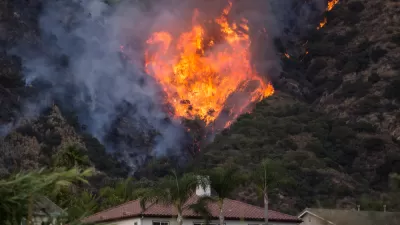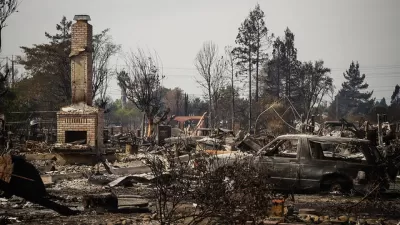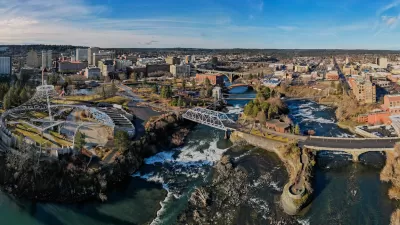Citing inadequate fire protection and public safety resources, the Spokane City Council has temporarily halted subdivision development in the wildland-urban interface of Latah Valley.

An article in NonStopLocal, the Spokane City Council passed a moratorium on the development of new subdivision housing in Latah Valley, which abuts wildland on the city’s southwestern edge. According to reporter Faith Iverson, “The Spokane City Council discussed the increased residential development specifically in the Grandview Thorpe neighborhood comparing it to the ratio of fire protection and public safety resources in the area.” The ban prohibits the city from accepting, processing, reviewing, or approving new applications for preliminary short subdivisions or preliminary subdivisions for housing in the banned zone.
This is not the first time a temporary ban has been levied on the Latah Valley neighborhood. Last year, the Inlander reported the Spokane City Council approved a six-month moratorium on development in the area in September 2022 to work on updating fees related to infrastructure costs for new developments. That ban was primarily driven by transportation infrastructure concerns. But after last summer’s wildfires burned down two homes and prompted evacuation notices in July and again in August, citizen groups began calling for a moratorium on development until the city funded the creation of a better wildfire emergency plan and a permanent fire station for the area.
Balancing risk with the need to build more housing, which often pushes development into the wildland-urban interface, will be an ongoing challenge for states and cities as the frequency and severity of wildfires grow. According to research published in the Source NM last year, close to 600,000 people in the United States were directly exposed to wildfires within 3 miles of their homes in the last two decades, 80 percent of those in western states and 70 percent in California. This growing risk has led multiple insurers to stop selling policies in high-risk states.
FULL STORY: City council discussing temporary stop on housing expansion in Latah Valley

Maui's Vacation Rental Debate Turns Ugly
Verbal attacks, misinformation campaigns and fistfights plague a high-stakes debate to convert thousands of vacation rentals into long-term housing.

Planetizen Federal Action Tracker
A weekly monitor of how Trump’s orders and actions are impacting planners and planning in America.

Chicago’s Ghost Rails
Just beneath the surface of the modern city lie the remnants of its expansive early 20th-century streetcar system.

Bend, Oregon Zoning Reforms Prioritize Small-Scale Housing
The city altered its zoning code to allow multi-family housing and eliminated parking mandates citywide.

Amtrak Cutting Jobs, Funding to High-Speed Rail
The agency plans to cut 10 percent of its workforce and has confirmed it will not fund new high-speed rail projects.

LA Denies Basic Services to Unhoused Residents
The city has repeatedly failed to respond to requests for trash pickup at encampment sites, and eliminated a program that provided mobile showers and toilets.
Urban Design for Planners 1: Software Tools
This six-course series explores essential urban design concepts using open source software and equips planners with the tools they need to participate fully in the urban design process.
Planning for Universal Design
Learn the tools for implementing Universal Design in planning regulations.
planning NEXT
Appalachian Highlands Housing Partners
Mpact (founded as Rail~Volution)
City of Camden Redevelopment Agency
City of Astoria
City of Portland
City of Laramie





























